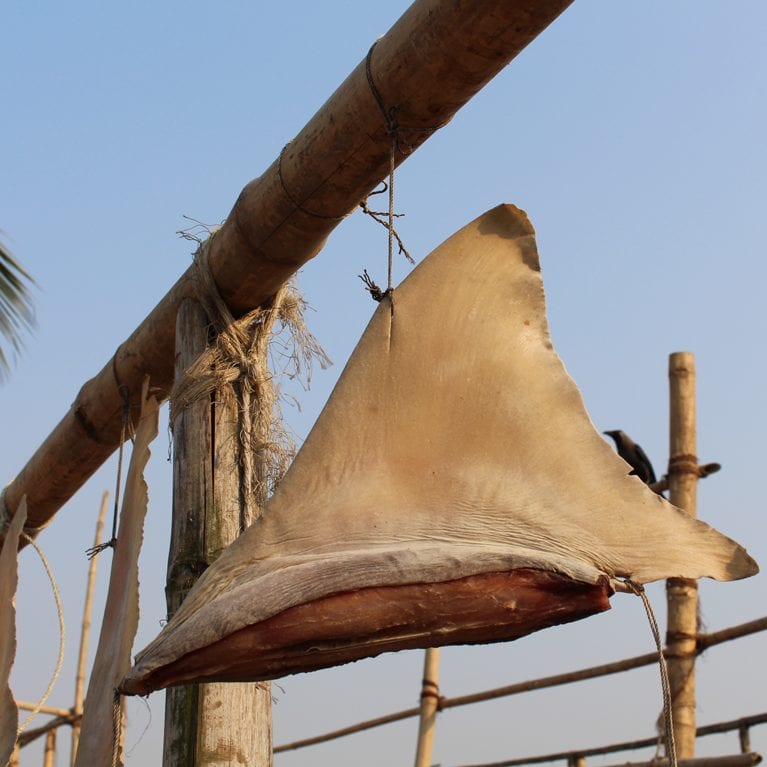Honing in on habitats
Annual encounters with the four sawfish species found in Bangladesh are reported to have been declining drastically over the past five years. Alifa is training local fishers to help map where these Critically Endangered species were found and what habitat is essential for their survival today.
I teach at the Department of Zoology, University of Dhaka, where I am the team leader at the Bengal Elasmo Lab. I give undergraduate and post-graduate courses and conduct marine research under this umbrella. I have just completed my doctoral studies at the Nature-based Solutions Initiative in the Department of Biology, Oxford, with the support of a Bangabandhu Scholarship. My research, ‘Towards a socially just sustainable fishery preserving sharks and rays in the Bay of Bengal’, aims to produce a replicable sustainability model for threatened shark and ray species by working closely with fishing communities. It steers a...
Mapping critical sawfish habitat and by-catch trend analysis for species specific habitat conservation in Bangladesh
Mapping the historic and remaining critical habitat for sawfish by the local ecological knowledge and by-catch data. This study will train fishers and locals to be para-biologists. Preparing for the saw fish population study for an evidence based bottom up species specific conservation research is also a cardinal goal.
During an 12-month survey in 2016-17 for threatened sharks in Bangladesh, landing of 25 sawfish (17 largetooth) were recorded by a network of traders. Biologists, fishers, and traders were interviewed and reported that 2 decades ago sawfish were abundant in coastal areas of Bangladesh and fishers caught them from nearby rivers. Two different species of sawfish were identified in photos, and interviewees expressed concern regarding the substantial population decrease they had observed. Hossain et al., 2014 reported a decline in annual sawfish encounter. 15 pilot questionnaire survey of targeted fishers with experience in catching sawfish revealed important ecological knowledge of fishers about critical habitat in 2018. But conservation actions have not been implemented for these Critically Endangered species, even though they are being by- caught and traded. Recent catch of sawfishes indicates that there exists important remaining populations of these species and that timely evidence-based conservation measures are needed.
Sawfishes have been globally exploited for food, cultural, religious and medicinal values leading to dramatic declines globally (Dulvy et al., 2014; Robillard and Séret, 2006; Clarke et al., 2007; Dulvy et al., 2016). They are the most threatened marine animals and all five species have been categorized as ‘Endangered’ or ‘Critically Endangered’(CITES, 2007; IUCN, 2013) and listed on Appendix I of CITES, banning international trade (CITES, 2013). Sawfishes have been recorded to breed and pup in mangroves, which are critical habitats (Simpfendorfer et al., 2010), and they inhabit shallow coastal waters of less than 100 m deep (Harrison and Dulvy, 2014). Such coastal and estuarine areas are under substantial pressure from human activity, especially in South and Southeast Asia where fishing pressure is intense and mangroves are often converted by logging, for shrimp aquaculture, or for other commercial developments (Polidoro et al., 2010). The Sundarbans Reserve Forest (SRF), Bangladesh is the world’s largest contiguous mangrove forest, lying in the Ganges-Brahmaputra Delta in the Bay of Bengal. The complex ecology where freshwater, estuarine and marine habitats merge, providing habitat for many threatened, evolutionarily distinct, and commercially and/or culturally important species. Most of the recent sawfish catch in Bangladesh has been reported from here. A study confirmed the presence of Pristis pristis and Anoxypristis cuspidata in Bangladesh (Hossain et al., 2014) and identified the Sundarbans as a critical nursing ground. In a recent genetic study we have also confirmed the presence of green sawfish in Bangladesh (Haque in prep). The Global Sawfish Conservation Strategy (Harrison and Dulvy, 2014) identifies strategic research, species and habitat protection, and trade limitation as key to protecting these Critically Endangered and culturally important species. This proposed project will be a follow-up of this study, bringing a more in- depth understanding of sawfish critical habitats in the Sundarbans.
- The main objective of this project is to map historical and remaining critical habitat of sawfishes in Bangladesh. Surveying the fishers of the estuarine riverine system of Bangladesh with a special emphasis on SRF to identify critical habitat/nursery grounds for sawfish (taking local’s ecological knowledge into account.
- We have already created an informal network of fishers and traders to report sawfish landing, with this project we will train them for improved reporting of incidental sawfish catches by promoting a cellphone reporting system to study the catch rate, areas of importance, and empowering fishers as pioneers of conservation.
- In future, through the data collected and collaboration with the fishers the project will develop and distribute a manual for best practice handling and safe release for sawfishes amongst fishers and will develop a sawfish population recovery plan in the context of Bangladesh for scientists and policy makers.


